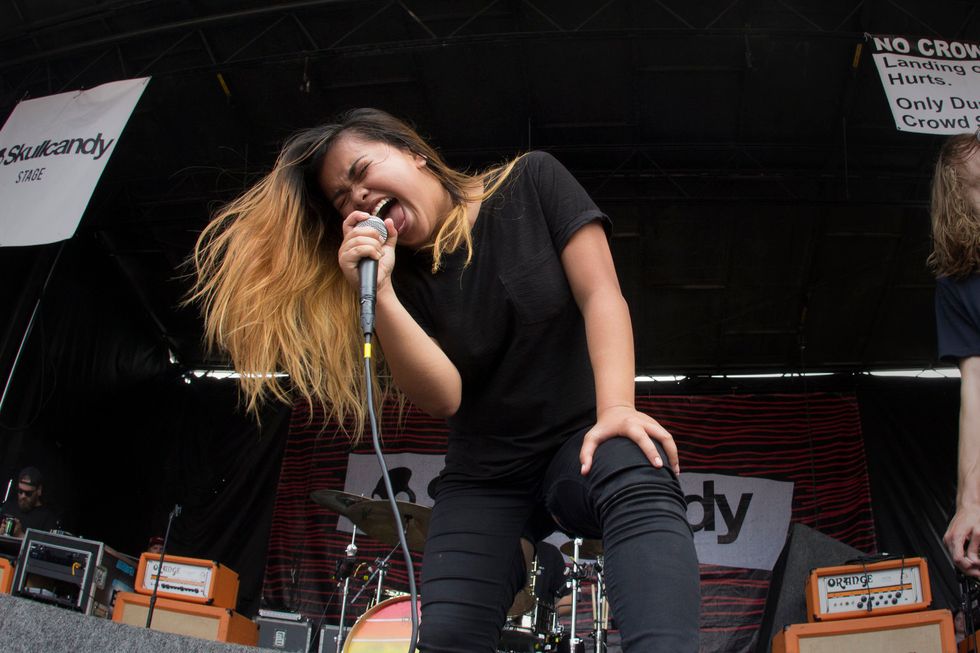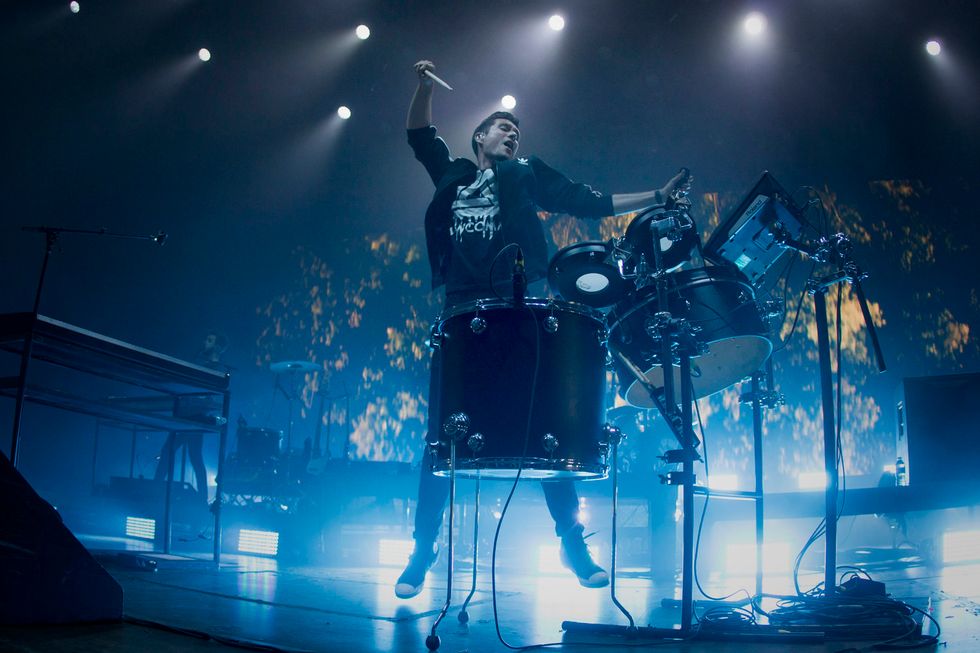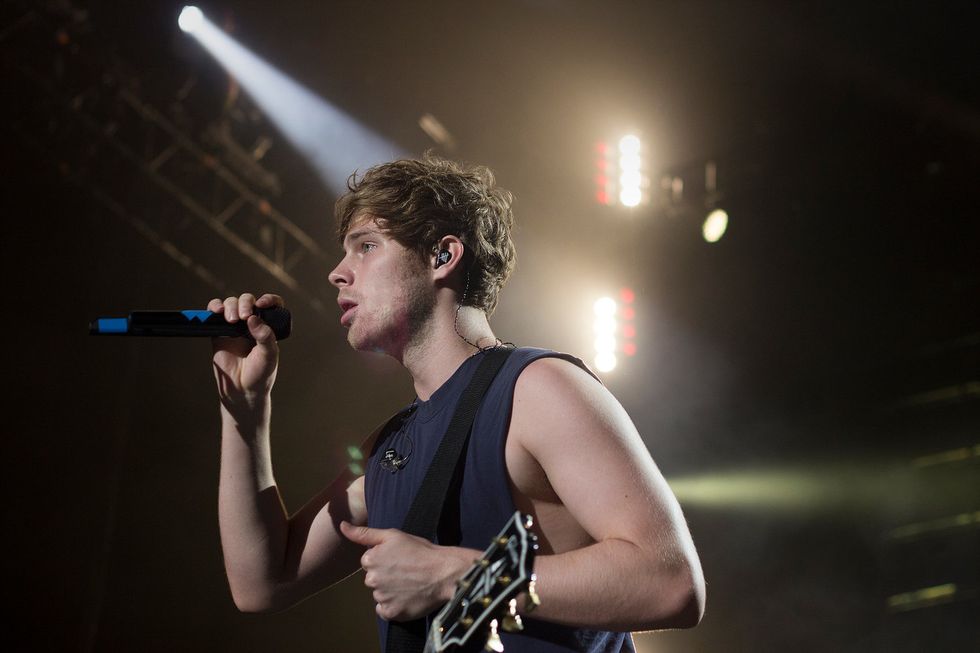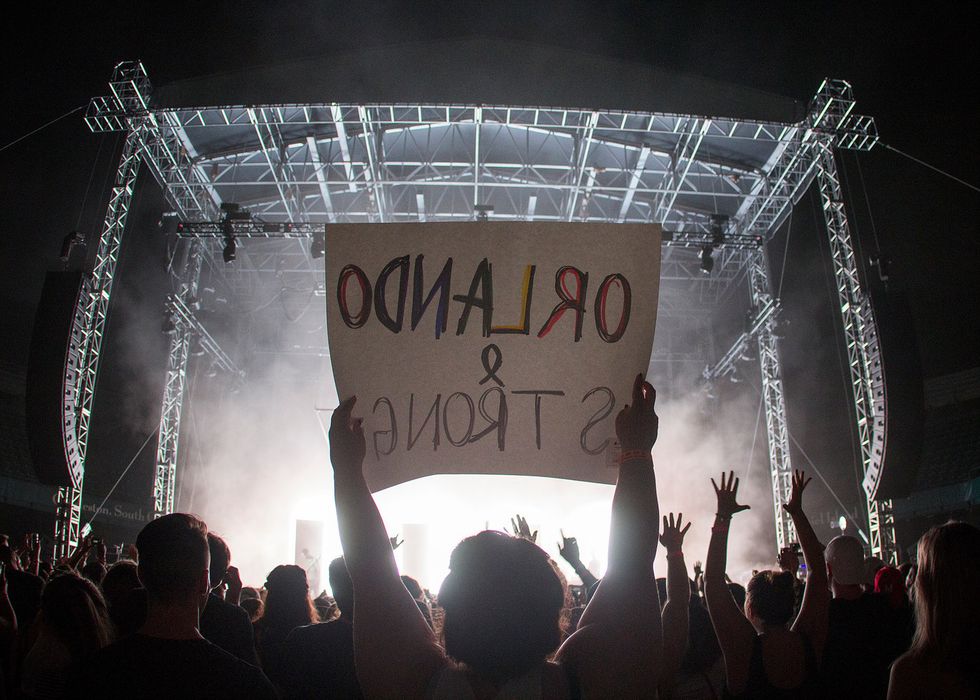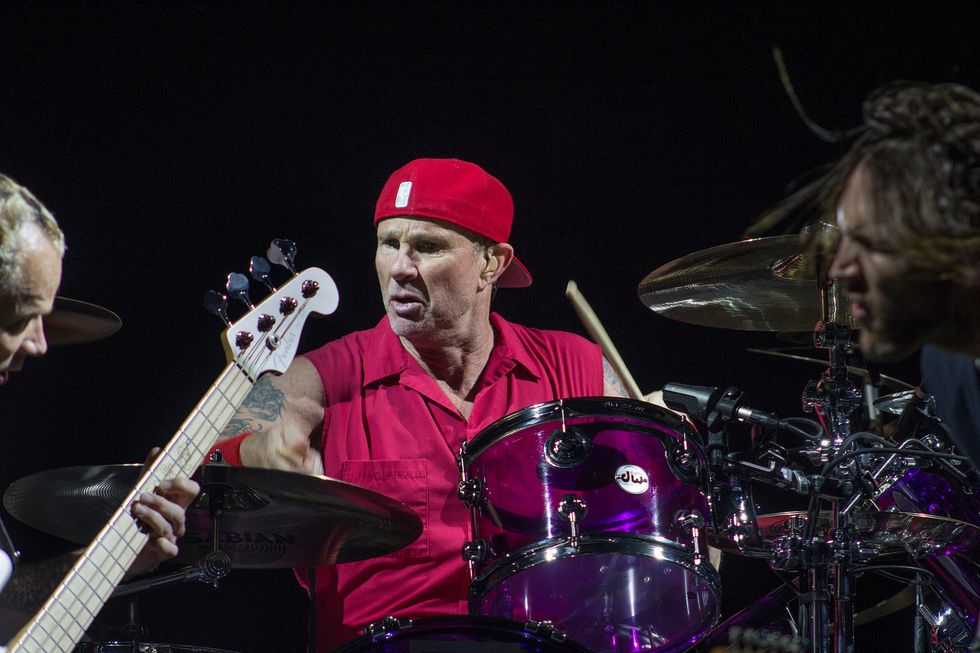People always ask me how I go to so many concerts, how I'm always so close to the stage, and how my photos are so clear. Then when I tell them I had a photo pass for the concert, it all makes sense. It seems so easy, but it's more difficult - and much more time consuming - than it seems. Music photography is much more than just going to concerts and pressing a button on your camera. In fact, you don't get to go to much of the concerts at all. Over the past year I've shot 150+ artists and while I still have a lot to learn, I know what it takes to be a music photographer. Before you get started, keep these things in mind.
1. Be prepared to spend a lot of money.
In very rare instances can you get a quality photo with a kit lens and no editing. A good beginner lens is a Canon 50mm f/1.8. It and its Nikon counterpart go for about $125 each, which is by far the cheapest lens you will ever buy - and for a good variety of shots, you don't want to limit yourself with just one lens. Plus, you won't always be shooting from the pit, so a 50mm lens won't be long enough. You also need a good editing software - Lightroom and Photoshop are both good options. This doesn't factor in all the gas money you will be spending if you get approved for several shows in a row in different areas. And if you are shooting a lot, you absolutely need a reliable external hard drive. Don't get the cheapest one you can find, I learned from that mistake - twice. Needless to say, music photography isn't cheap to do. Oh, and unless you've been doing this for decades, you probably won't make the money you spend back through your photography, so you'll need another job or two (or seven).
2. You won't get approved for every show you want to shoot.
It's okay to be disappointed about being denied a pass for your favorite band, but don't ever feel entitled to shoot anything, no matter the size of the artist is or how experienced you are. Publicists are busy people, and they don't have to approve everyone. Being denied is just part of life, and if you can't handle it, music photography probably isn't for you.
3. Be comfortable enough with your camera equipment to be able to move fast.
Francheska Pastor of Bad Seed Rising in June 2017
99% of the time, you will only shoot the first three songs. That's only about 10-15 minutes. If you aren't comfortable with your camera, you may not get as many quality shots as you need. Shooting in manual is extremely important because cameras aren't designed for low light settings where people are moving fast. I like to keep my shutter speed no slower than 1/200 because there are constantly people running and jumping around the stage, sometimes even flipping their hair. You won't get that with a 1/60 shutter speed. Unless you're outside in daylight, you'll need your aperture open pretty wide - and in many cases, you'll need it all the way open. That's why the 50mm f/1.8 lens is so important, because most kit lenses only open up to about f/4.5. Without a lens that opens to at least f/2.8, you'll end up with photos that are too dark, too blurry, out of focus, or some combination of all three. You don't want that. In order to get the best shots possible, you'll need to stay alert at all times while making sure your camera settings are the way you need them to be. Getting that perfect shot is a great feeling, but it can come with a lot of stress if you can't work under pressure in a short time constraint.
4. Be conscious of your depth of field.
This is especially important in indoor, dimly lit venues. In order to get proper exposure, you need a wide aperture, which is great - but it shortens your depth of field, making it harder to get what you want in focus. For instance, if the guitarist is standing with the headstock pointed towards your camera, make sure your camera is focused on their face and not the headstock. With a small depth of field, it's almost impossible to get both in focus. With such a fast-paced environment, you'll get many shots that are good compositionally, but with subjects out of focus. Make all the excuses you want, but if the person (typically the face) is out of focus, it's not a good shot and shouldn't be published. It can be really frustrating to go through so many photos that could be perfect, but just aren't good.
5. Editing is way more important than you think - and it takes a lot of time.
Blake Richardson from New Hope Club in August 2017
When you have about 100 photos per song that you need to go through, editing can be a daunting task. For the best quality photos and the most control while editing, make sure to shoot in RAW instead of JPEG. Shooting in JPEG, which is most likely your camera's automatic setting, compresses the file, while RAW doesn't. Shooting in RAW also means that you cannot open the file without an editing software. Even if you insist on shooting in JPEG, however, you will want to do some editing for the best results. Concerts have bizarre lighting situations, and many times the camera won't respond to it as well as you think. For instance, blue light will look blown out and terrible 100% of the time without editing. If you don't believe me, look at the before & after above. The small bit of blue light is extremely distracting. Imagine if the whole photo was lit up in blue. That's not to mention the crazy blown out highlights and dramatic shadows that can be distracting. The same tools won't work for every situation, so you need to be familiar with everything from exposure, highlights and shadows, curves, and levels for lighting issues. You also need to know everything from saturation, luminance, split-tone, and selective color for color issues.
6. Editing can't fix everything.
While the clarify and sharpening tools are great in moderation, you can't fix an out of focus photo. If the mic looks sharp and the face behind it is out of focus, there's nothing you can do. Period. Except for throwing it in the garbage. Adding excessive Photoshop filters will only make it look worse.
7. You can never have enough lenses.
Dan Smith from Bastille in May 2017
Remember that lens I told you to get earlier? Sadly, that's just the first lens on a long list that doesn't end. At the bare minimum, it's good to have three: a telephoto lens for when you shoot from soundboard; a lens that is somewhere between 24-85mm, which can either be fixed or zoom and it's what you will probably use most of the time; and a wide angle lens, which is great for close shots with unique composition. In the photo above, I used a Canon 15mm f/2.8 lens which resulted in a composition I couldn't have gotten with any other type of lens.
8. Don't bend the rules.
People who don't follow the rules of publicists, security, or venue staff are the reason why the rules are so strict in the first place. If the artist's rules are first three songs, you should not stay for the fourth song, even if you don't have someone to escort you out. Yes, it sucks that the last song is the one with confetti, but you still can't bend the rules, no matter how talented you think you are. Unless you're told otherwise, assume that the rules are no video and no flash, and even then, don't ever use flash unless you want the entire crowd to hate you. Following the rules will only do you good. Don't act like you're too important to follow them.
9. Avoid "mic mouth" at all costs.
Luke Hemmings from 5 Seconds of Summer in July 2016
There is nothing that makes my fists clench as much as "mic mouth," which means the mic is covering up a sizable portion of the artist's face. If it's covering an eye, the nose, the forehead, the whole mouth, or, god forbid, a combination of those, get rid of it and never look at it again. Put it in the garbage. No matter how good the focus or the lighting situation is, mic mouth is a huge faux pas. But you can avoid it if you're careful. In the photo above, I'm off to the side of the singer instead of head on. Imagine if I was directly in front of him and how much different the composition would be. It's tempting to want to be as close to the artist as you can, but that won't always result in the best photos. If you want to get closer to the artist, wait until the mic is away from their mouth. The same singer from the photo above got in my camera with his guitar (and no mic!) later on during the show. You'll probably still get some mic mouth shots even when you consciously try to avoid them - just please, PLEASE, don't publish them.
10. Know that 99% of the time, you won't get to see the whole concert.
Many artists don't approve a photo pass and a review ticket for the same person, which means that after the first three songs of the last act, you'll be escorted out and you'll have to leave. Even if you have a review ticket or if you purchased a ticket, you'll most likely still be escorted out to put your camera away. That means you'll miss part of the concert. If you have a ticket to a general admission show, you won't be able to be close enough to touch the lead singer's hand. You might not even be able to see their hand by the time you get to the crowd. So if being close to the stage in the pit is something that's really important to you, you need to be ready to sacrifice your whole experience for 10 minutes shooting from the photo pit. If you can relate to this, you need to decide what's more important to you - the photos or the concert experience as a whole.
11. Pay attention to your surroundings.
The 1975 in June 2016
Unless you're shooting a small local band, you will rarely ever be the only one in the photo pit. Most local band shows probably won't even have a photo pit. If there are people around you, you must be conscious of them.There are plenty of times I've been the only photographer at a show, but I've only had a photo pit to myself once. If you're with a few other photographers in the pit, be mindful of not getting in their way. If you're constantly getting in front of other photographers' shots, no one will want to shoot with you. Make sure you don't get in the way of tour photographers or videographers either. Sometimes you'll be shooting from the soundboard, and in that case, it's pretty common to bring a stool. With that, be extra careful you're not in the way of the crew, because they are instrumental to making the show run smoothly. Whenever I'm shooting at a venue without a photo pit, I go ahead and make friends with the people around me and I tell them to tell me if I'm in their way at all, and that I'll only be there for the first few songs anyway. Sometimes, interacting with the crowd can even lead to friendships, which brings me to my next point. The people in the crowd are the reason whatever artist you're shooting is successful, so don't ignore them. Some venues don't allow pictures of the crowd, but if they do, get some shots of them. I took the photo above in Charleston a few days after the 2016 Orlando nightclub shooting, and after I showed it to her we exchanged contact information and she told me she went to school with one of the victims. You never know what kind of stories are in the crowd.
12. If a photo isn't flattering, don't publish it.
Remember that Beyoncé photo from the Super Bowl halftime show that was so unflattering, she tried to get it removed from the Internet? That should have never been published. It should have gone in the garbage with all those mic mouth photos. That photo alone is the reason many popular artists don't allow photographers anymore. It doesn't matter if the lighting, composition, and focus are perfect. Put yourself in the artist's shoes. If that was a photo of you making that face, would you want it published? If the answer is no, don't be selfish. Put it in the garbage.
13. It's difficult to get a great photo of each person on stage.
Chad Smith of Red Hot Chili Peppers in April 2017
But that doesn't mean you shouldn't try. Drummers are notoriously the hardest to get photos of, especially if you're using a wide aperture. Or if they're high up on the stage and you're vertically challenged like me. But it's not impossible. It does take practice, but it also depends on the setup of the stage. You probably won't get a great photo of the drummer the first time you shoot, but even if it's your 50th time shooting, you still may not. If this drummer wasn't positioned exactly where he was on the stage, it would have been much harder to get a good photo of him.
14. You will always have room to learn.
Especially if you're just getting started, you will always be working with photographers who are more experienced than you. Don't be intimidated, but don't act like a know-it-all either. Have conversations with them. They probably have some cool stories of artists they've shot before. Listen to their advice, even if you think you already know what they're saying (even though chances are, you probably don't). You'll make some good friends that way.
15. Be ready for the dedication it will take.
Sure, it's fun to be able to go to a lot of shows, but music photography isn't always everything it's cracked up to be. If you're not ready to sacrifice your concert experiences, money, or all your time, your heart won't be in it and your work will reflect it. But if you feel the passion and you know that you want to do photography for the rest of your life, get out there and start shooting.



